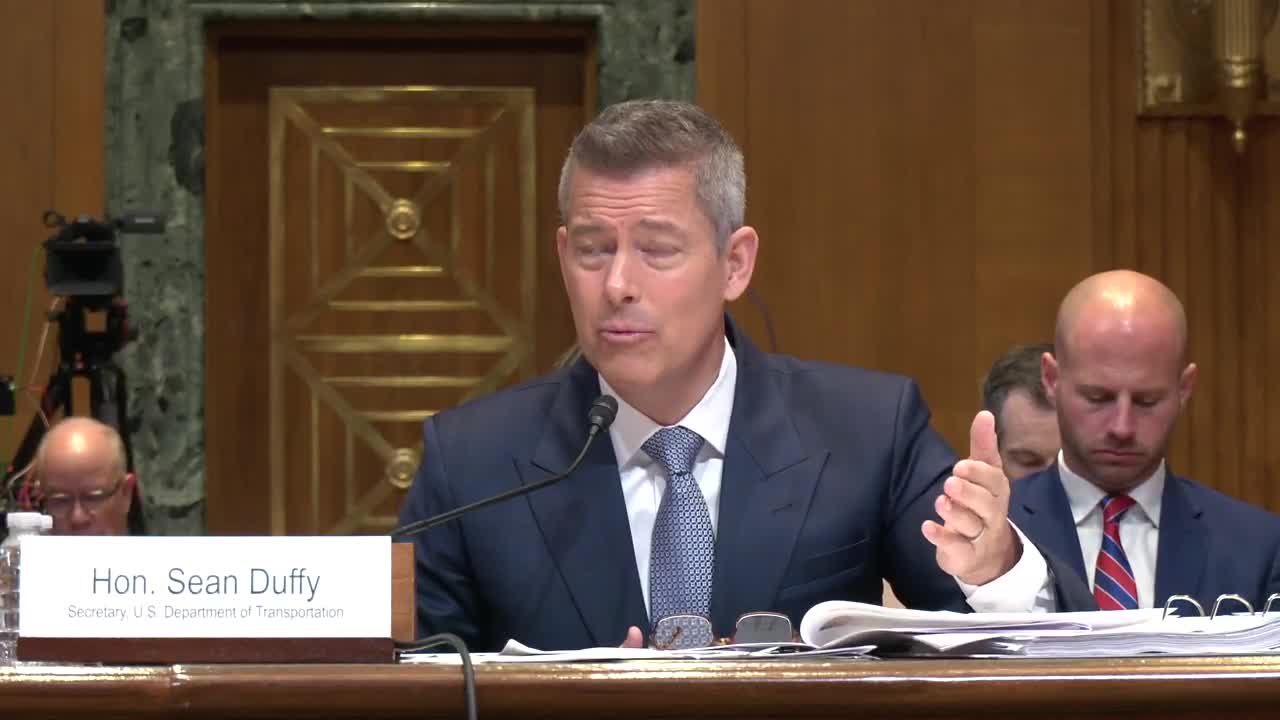Transportation Secretary outlines plans to simplify grant application process for rural communities
May 15, 2025 | Appropriations: Senate Committee, Standing Committees - House & Senate, Congressional Hearings Compilation
This article was created by AI summarizing key points discussed. AI makes mistakes, so for full details and context, please refer to the video of the full meeting. Please report any errors so we can fix them. Report an error »

During a recent U.S. Senate Committee on Appropriations hearing, the spotlight was on the Department of Transportation's (DOT) efforts to streamline access to federal grants, particularly for smaller communities. Lawmakers expressed concern over the complexity of the application process, which often favors larger institutions that can afford the high costs of grant writers. This issue has made it challenging for smaller communities to compete for vital funding.
Senator Schatz highlighted the need for a simpler process, stating, "We see this a lot in USDA grants... the ability to apply is so complex." He emphasized that the current system is a barrier for many, urging the DOT to focus on making grants more accessible. The sentiment was echoed by other committee members, who noted that the expansion of high-speed internet has led to a resurgence of interest in rural living, further necessitating improved infrastructure.
The hearing also touched on the DOT's commitment to adopting innovative technologies to enhance project delivery and safety. Secretary of Transportation expressed enthusiasm for integrating advanced digital tools, such as drones and automated inspection systems, into the transportation sector. He stated, "We are at the cusp of a technological revolution... getting the right pace on the rules and regulations is gonna be critical."
In addition to these discussions, the committee addressed the status of approximately 3,200 grants currently under review. Secretary of Transportation clarified that while there is no freeze on funds, the review process is ongoing to ensure that grant agreements align with transportation priorities. He acknowledged the need to expedite this process, admitting that the current pace is "not fast enough."
The hearing concluded with a call for transparency regarding the timeline for grant approvals, as lawmakers urged the DOT to communicate more effectively with state departments about when they can expect funding. The discussions underscored a bipartisan commitment to improving infrastructure access and efficiency, with a clear focus on supporting smaller communities and embracing technological advancements.
Senator Schatz highlighted the need for a simpler process, stating, "We see this a lot in USDA grants... the ability to apply is so complex." He emphasized that the current system is a barrier for many, urging the DOT to focus on making grants more accessible. The sentiment was echoed by other committee members, who noted that the expansion of high-speed internet has led to a resurgence of interest in rural living, further necessitating improved infrastructure.
The hearing also touched on the DOT's commitment to adopting innovative technologies to enhance project delivery and safety. Secretary of Transportation expressed enthusiasm for integrating advanced digital tools, such as drones and automated inspection systems, into the transportation sector. He stated, "We are at the cusp of a technological revolution... getting the right pace on the rules and regulations is gonna be critical."
In addition to these discussions, the committee addressed the status of approximately 3,200 grants currently under review. Secretary of Transportation clarified that while there is no freeze on funds, the review process is ongoing to ensure that grant agreements align with transportation priorities. He acknowledged the need to expedite this process, admitting that the current pace is "not fast enough."
The hearing concluded with a call for transparency regarding the timeline for grant approvals, as lawmakers urged the DOT to communicate more effectively with state departments about when they can expect funding. The discussions underscored a bipartisan commitment to improving infrastructure access and efficiency, with a clear focus on supporting smaller communities and embracing technological advancements.
View full meeting
This article is based on a recent meeting—watch the full video and explore the complete transcript for deeper insights into the discussion.
View full meeting